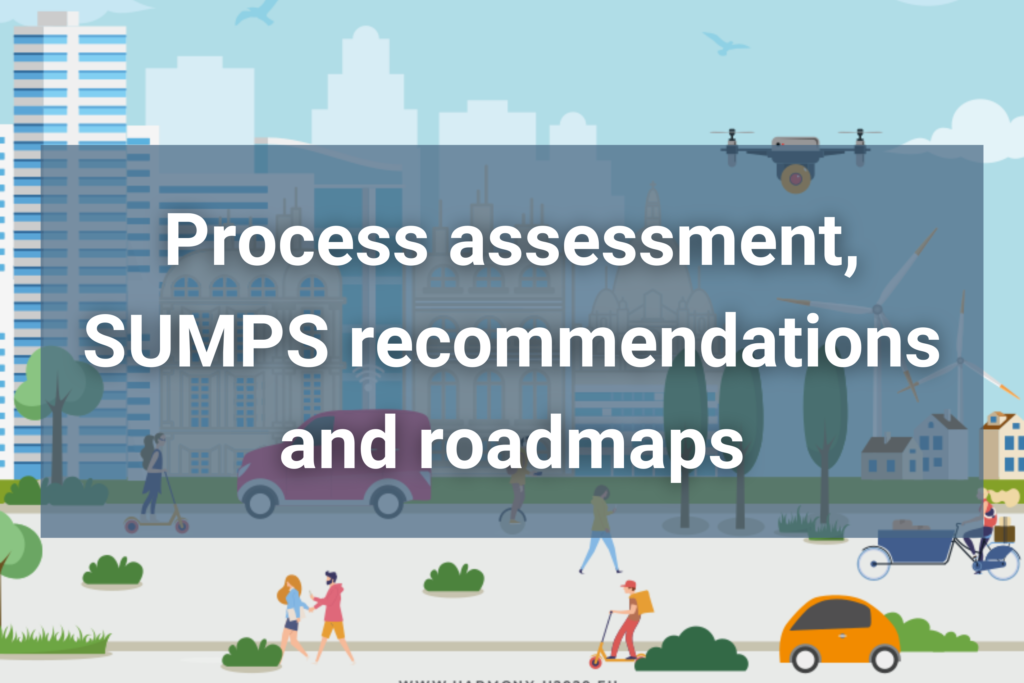Harmony continues its roads to meaningful impact and success. Within this path, a new work package has begun. The Work Package 8 aims at translating the results of the HARMONY integrated spatial and transport planning model suite into recommendations for updating spatial and transport strategies as well as and the SUMP framework in the light of the new era of mobility that is coming ahead.

What the project seeks with this new work package is primarily to assess the HARMONY multiscale platform implementation and the possibility to scale-up and transfer the approach in other contexts. Also, to use the findings of the electric AVs and drone demonstrations and propose specific recommendations for enabling the market of these technologies with a view on addressing useful indications for policy makers to govern the mobility transition. Finally, to transform these recommendations in practical guidance’s thru developing HARMONY roadmaps to support authorities in the transition. Some questions may arise and, in this article, we will try to address some of them:
Why is the start of this stage of the project so relevant?
This stage of the project is crucial as it aims to translate the results of the HARMONY integrated spatial and transport planning Model Suite – that assesses the multidimensional impacts of the new mobility concepts and technologies – into recommendations for authorities to update spatial and transport strategies, including specific recommendations for electric AVs and drones and the SUMP framework, to scale-up and transfer the methodology and findings to other territories.
The development of HARMONY roadmaps will be useful to lead the transition to new mobility services, filling the gap between public authorities and new mobility service providers in metropolitan regions. By exploring innovative solutions, HARMONY provides insights and recommendations about their actual use and exploitation in real scenarios.
In this phase, it is time for the evaluation of the process, the recommendations of the SUMPs and the roadmaps. What is the biggest challenge for Harmony?
HARMONY will provide decisionmakers of metropolitan areas and other cities across Europe with policy recommendations and guidelines enabling them to lead a sustainable transition to a low carbon mobility era. In particular, policy recommendations aim to bridge the transport gap between metropolitan regions and neighboring areas, and work towards a resilient, sustainable, optimized, intermodal and harmonized transport system.
The biggest challenge is to translate all technical findings in a more comprehensive and accessible language. HARMONY MS integrates land-use, people and freight activity-based, and multimodal network models allowing for vertical planning. It attempts a holistic, in-depth analysis, using sophisticated agent-based simulators that range from the long-term strategic to the short-term operational level, aiming to capture the maximum detail of travel behavior and network performance.
Will the analysis of all the information gathered so far help to identify the most eco-rational scenarios for application in other metropolitan areas?
In order to increase coordination between multimodal infrastructure mobility, spatial economic development and social inclusivity, a number of SUMP recommendations will arise from the results of the AV and drone demonstrations and the Model Suite. A set of multiscale and multidimensional scenarios will be evaluated and ranked based on the resilience of the transport system and their impact on air-quality, accessibility, and energy consumption. The most promising and eco-rational scenarios will be prioritized and qualify for the provision of scalable strategic recommendations.
Finally, HARMONY roadmaps will capture innovative mobility solutions long-term impacts, guiding decision makers to define and implement adaptation and spatial redesign strategies and to attract investments.
What is the next step for Harmony?
HARMONY project will go on for another year, until February 2023. In this final stage of the project, WP8 (Process assessment, SUMPS recommendations and roadmaps) will process relevant achievements, identify lessons learnt, and make relevant knowledge available to a wide audience of transport planners in the form of guidelines and roadmaps. A file dissemination workshop will be organised to facilitate this knowledge sharing.